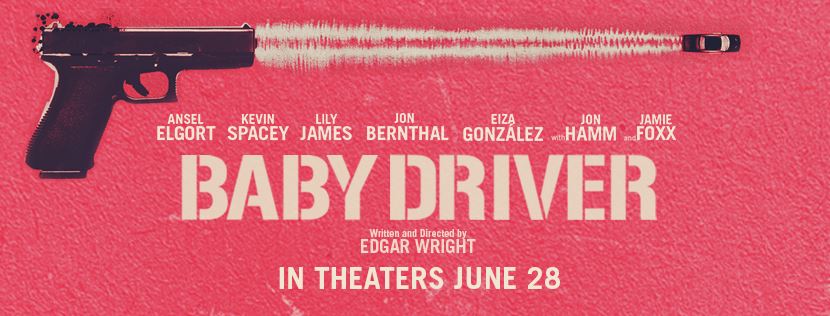‘Baby Driver’ – a film about getaway driving with forensic science in the engine…
Categories Movies, Science & Justice
Baby Driver is a fast, funny and relentlessly entertaining film by Edgar Wright about a young getaway driver who just wants to drive off into the sunset with his girl. Its joyous fusion of music and onscreen action and carnage (no pun intended… well, maybe a little…) is also smart and inventively clever. Seriously, you should go and see it. Here’s the trailer to whet your appetite:
But as with many movies about crime, the spectre of forensic science looms large over the players at key moments in the narrative. I mean, not as in a forensic team searching through a crime scene, but in terms of the fear of what forensic science could reveal about the criminals and their activities. Now I concede that maybe the film doesn’t say that specifically, but it’s there…
Anyone who has ever played Grand Theft Auto 5 will know that not every heist goes to plan, and indeed this is the case here. So when one goes wobbly, and a weapon is dropped and left behind, it is the fear of the subsequent fingermark recovery that causes the culprit to be, err, ‘released’ from the team. Recent articles in Science & Justice have shown that fingermarks are not the only evidence recoverable from guns – GSR distribution can reveal significant intelligence. And there is also a growing interest in how forensic investigators share such intelligence too, particularly across state borders, and how such intelligence is managed; effective collaboration between forensic and investigative bodies is key to modern policing – or at least it should be.
And while we’re on the subject of heists, three times in the film our characters take measures to counter the threat of being identified. First, CCTV proves a concern and pushes the crew to adopt a specific approach to the robbery – one that is ultimately futile and seals their fate. Second, our protagonists argue about being identified from a line-up. Those who have studied forensic science will know the issues here with eye witness statements, but the characters in this film don’t have the benefit of such undergraduate degrees. This means that again thefear of what the forensic investigative process could do results in some unnecessary bad decisions. Seriously, it’d have been better if they’d just read up on their human factors beforehand… Third, when they realise that they have had their voices recorded without their knowledge they take violent measures to address this – measures which ultimately trigger the final third of the film’s story arc. Although perhaps given the current debate surrounding this issue, they could have just relaxed a bit…
There are also guns and gunfire, and we see the benefit of body armour for some of the characters, and the distribution of bullet wounds when this isn’t strapped on. In the real world this is something that has been discussed within contexts of mass violence. Baraybar sifted through a significant number of case reports from conflicts in order to present a pattern of bodily injury which can be used to identify whether a shot victim was likely to be a civilian or in the military. There is also on-going work to assist forensic pathologists and physicians in recovering bullets from human remains in a manner which allows further forensic study. And of course since it’s a film primarily about driving, there are cars too. And because this is a shiny Hollywood film, these cars crash into things. Interestingly, and pertinent to the end of the film, our hero’s noble character means that he avoids causing civilian injury, or running over the city’s many cyclists.
It’s not often that a film that largely glamorizes criminal activity also shows the consequences of crime, but this one does. Thus the film starts to draw to an end through the implied presentation of a mass of forensic evidence and analysis to demonstrate that this guy was, in fact, involved in all of these crimes. The fact that he ends up where he does, is because of the trail of forensic evidence he left behind.
Baby Driver is not a cinematic contemplation of Locard’s Principle and the meaning of justice. It’s a fun, fast romp. But if you look hard enough through the smoke from all that burning rubber, the characters’ awareness of forensic science and its implications are there…